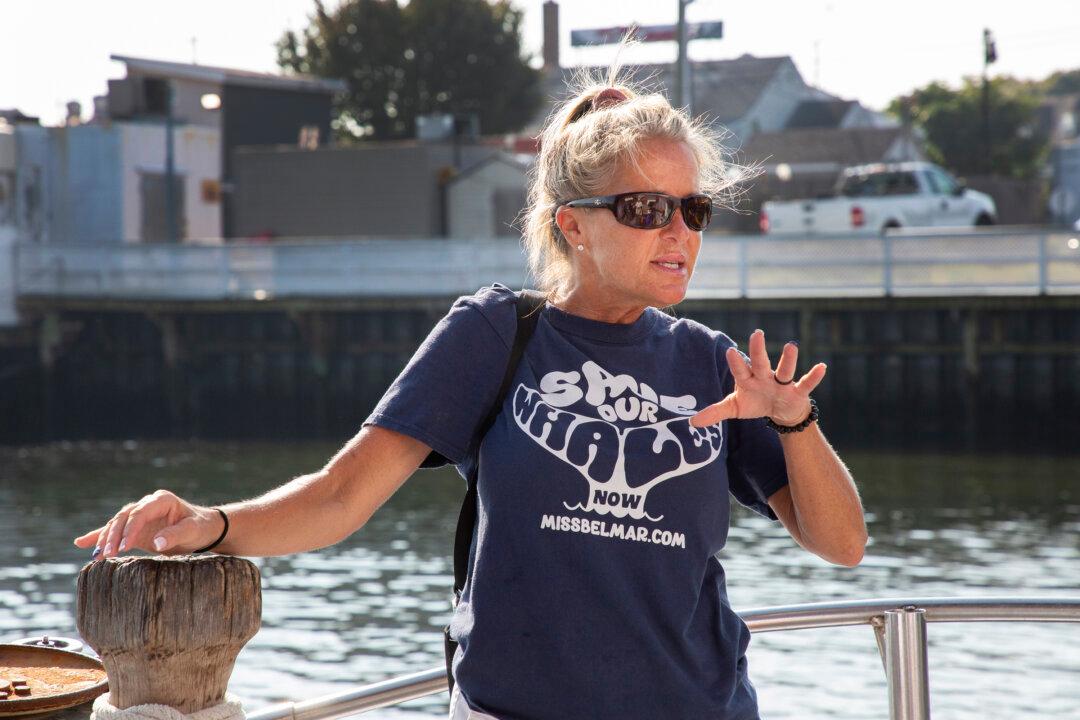BELMAR, N.J.—Somewhere off the Jersey Shore, it became clear that the Parker Pete Express wasn’t likely to encounter any whales.
Conservation biologist Trisha DeVoe, the boat’s designated cetacean spotter, broke off an interview with The Epoch Times to speak with the captain. She wanted him to steer the boat toward land.





